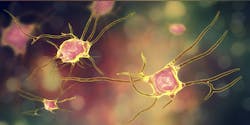A new study led by UC Davis MIND Institute researchers confirms that brain development in people with autism differs from those with typical neurodevelopment. According to the study published in PNAS, these differences are linked to genes involved in inflammation, immunity response and neural transmissions. They begin in childhood and evolve across the lifespan.
The researchers analyzed brain tissues from 27 deceased individuals with autism and 32 without autism. The age of these individuals ranged between 2 and 73 years.
The tissues were taken from the superior temporal gyrus (STG) region — an area in the brain responsible for sound and language processing and social perception.
The team analyzed brain tissues as well as isolated neurons using laser capture microdissection techniques. They studied mRNA expression on a molecular level in the STG tissue and the isolated neurons. The mRNA translates the DNA code into instructions the cell machinery can recognize and use to make proteins for different body functions.
The study identified 194 significantly different genes in the brains of people with autism. Of those genes, 143 produced more mRNA (upregulated) and 51 produced less (downregulated) in autistic brains than in typical ones.
The downregulated genes were mainly linked to brain connectivity. This may indicate that the neurons may not communicate as efficiently. Too much activity in the neurons may cause the brain to age faster in autistic individuals.
The study also found more mRNA for heat-shock proteins in autistic brains. These proteins respond to stress and activate immune response and inflammation.
The study identified 14 genes in bulk STG tissue that showed age-dependent differences between autistic and neurotypical individuals and three genes in isolated neurons. These genes were connected to synaptic as well as immunity and inflammation pathways.
For example, in typical brains, the expression of the HTRA2 gene is much higher before age 30 and decreases with age. In the STG neurons of people with autism, the expression levels of this gene begin lower and increase with age.
The researchers also uncovered different inflammation patterns in autistic brain tissues. Several immune and inflammation-related genes were strongly upregulated, indicating immune dysfunction that may get worse with age.
The study pointed to an age-related decrease in the gene expression involved in Gamma-aminobutyric acid (GABA) synthesis. GABA is a chemical messenger that helps slow down the brain. It works as an inhibitory neurotransmitter.
The study found direct molecular-level evidence that insulin signaling was altered in the neurons of people with autism. It also noted significant similarities of mRNA expressions in the STG region between people with autism and those with Alzheimer’s disease. These expressions may be linked to increased likelihood of neurodegenerative and cognitive decline.

